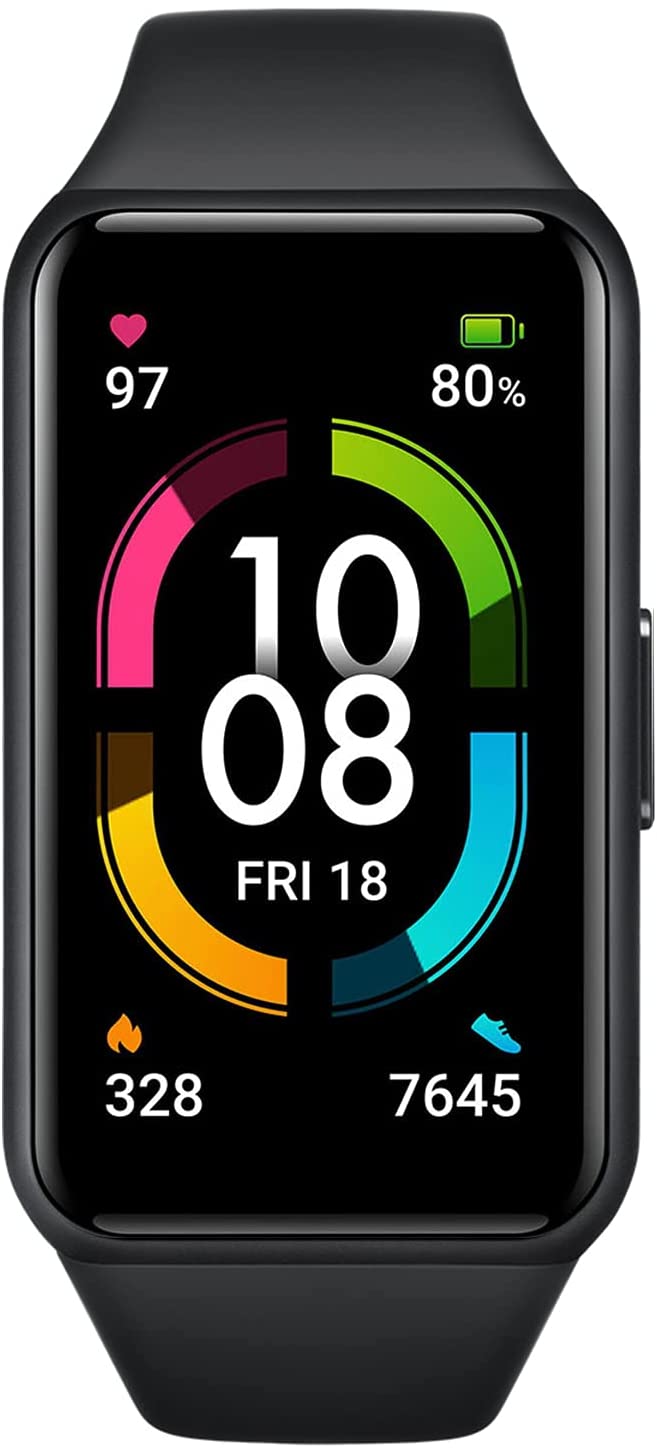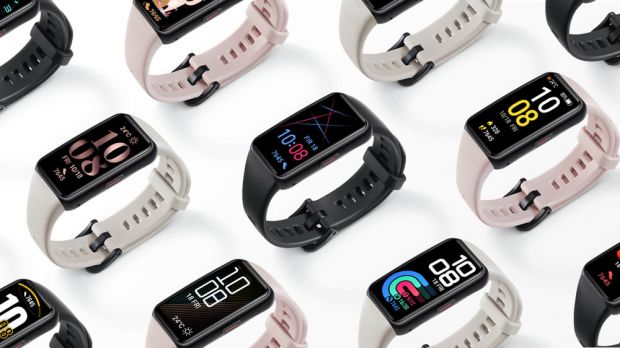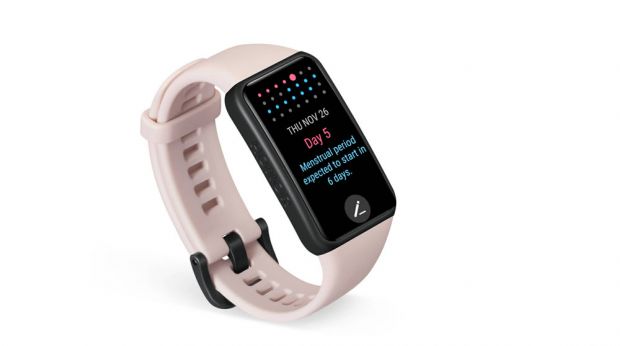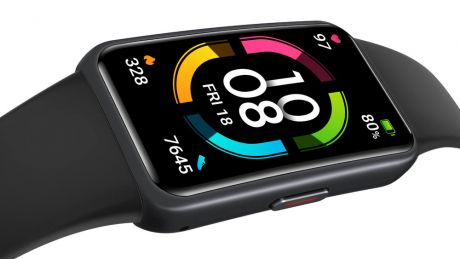Our Verdict
An attractive fitness band with a smartwatch aesthetic, though the GPS tracking has compatibility issues for Android users.
For
- Distinctive and stylish
Against
- Useful sleep tracking
- Impressive battery life
- Competitively priced
You can trust Coach
I had extremely high hopes for the Honor Band 6. This might be the most handsome fitness band I’ve ever worn, with a wider footprint blurring the line looks-wise between tracker and smartwatch.
But after three frustrating runs during the testing process, I was told by Honor’s representatives that connected GPS won’t work with Android phones when you start a run from the device. While it’s possible to start a workout from the phone rather than the wearable, this is a work-around that’s far from ideal.
I’ve had no indication that this will be changed, and it means that the Honor Band 6 is hobbled when used with anything but iPhones or the small number of Huawei or Honor handsets available in the UK (one of which I used for the rest of my review). Because of stiff competition in the under-£50 bracket, that makes it very difficult to recommend to Android owners, regardless of its many other qualities. However, iPhone owners who don’t want to spend a fortune on an Apple Watch will find a lot to like.

Honor Band 6 In-Depth
Design of the Honor Band 6
Most cheap fitness bands look pretty similar. At a glance you’d have difficulty distinguishing between a Fitbit Inspire 2, Samsung Galaxy Fit 2 or Amazifit Band 5. They’re all long, narrow fitness trackers embedded in a rubber band.
The Honor Band 6 is noticeably wider, bridging the gap between fitness band and smartwatch. In short, it looks like a slightly squashed Apple Watch.
The screen is an AMOLED number with a resolution of 194 x 368, giving it around the same number of pixels as a laptop screen. It’s more than sharp enough to clearly display running data and notifications, though even with the brightness all the way up, I found it struggled to be completely readable during an unseasonably sunny April.
There are a number of watch faces to choose from, with the ClassiK – a smart-looking monochrome analogue face with Roman numerals – my favourite.

While large, the screen isn’t big enough to prevent touchscreen use being a bit fiddly, although the inclusion of a button on the right-hand side makes it easier to use than many of its rivals. It’s useful alongside a remote control for your music or podcasts, while there’s also a shutter function for your phone’s camera so you can use the superior rear-facing one for selfies.
The one part of the design I’m not crazy about is the mechanism for replacing the straps. Unlike most fitness bands, which hold the tracker in place with stiff rubber casing, both sides of the Honor Band 6’s strap have to be taken off by removing a dangerously tiny clip with your fingernail, followed by some brute force on each half of the strap. It’s awkward, fiddly and not great for your nails, though admittedly it’s not something you’ll do all that often. As you might expect, this isn’t your standard watch strap, and you’ll have to get bands specifically designed for it.
Health Features On The Honor Band 6
Despite an aesthetic that borders on smartwatch, the Honor Band 6 clearly sits on the fitness tracker end of the spectrum, with a whole host of native health and wellness features. The band can take an SpO2 measurement at will, track menstruation, passively track your estimated stress levels, and provide breathing exercises for when you decide you need to calm down.

I’m dubious as to the need for a stress tracker – I believe most of us are aware when we’re feeling under pressure without needing a wearable to tell us – but the idea is that it can be a measure of the physical stress your body is under (relying on heart rate variability), and can tell you whether your body is able to switch off and recuperate.
I found the breathing exercises of more practical use. A blue yin and yang symbol appears on the screen, and you’re encouraged to breathe in and out as it expands and contracts for a set period of time. At the end, the band tells you how much you’ve de-stressed, as measured by your starting and finishing heart rates.
Sleep Tracking With The Honor Band 6
I’ve always been impressed with the Huawei Health app’s detailed sleep tracking (Honor wearables connect to parent company Huawei’s app), and combined with the Honor Band 6’s heart rate tracker it excels once again here.
To get full insights, you have to enable something called TruSleep, which impacts battery life, but it’s worth it. It not only breaks down your night’s sleep into deep, light and REM sleep, but also provides useful insights about the data and practical steps you can take to make your shut-eye more refreshing.
Unlike most apps, which tend to just give you the data and leave you to it, Huawei Health tells you what the average for each stage of sleep is, and then lets you tap into it for more useful information. From that, I can tell you that last night most of my metrics were normal, except REM sleep which was unusually high, and deep sleep continuity which was low. Tapping on the latter tells me that I can address this with a number of lifestyle, scheduling and dietary changes. Helpful! This is without doubt one of the best implementations of sleep tracking I’ve seen.
Tracking Activity On The Honor Band 6
In all, the Honor Band 6 can track ten forms of exercise with varying degrees of usefulness – although six of these are indoor/outdoor variants of the same exercise. They are outdoor and treadmill running, outdoor and indoor walking, outdoor and indoor cycling, pool swimming, elliptical training, rowing machines and the catch-all other.
The ones without connected GPS will estimate calorie burn based on your time and heart rate, and it works as well as any other tracker – which is to say it’s OK, but with nowhere near as much useful data as you get from a GPS tracked run. Still, it’s useful if you want to track how much exercise you’re doing in raw time, of course.
Running With The Honor Band 6
For my first three runs with the Honor Band 6, I waited patiently for it to lock on to GPS from my connected Samsung Galaxy S10e, but gave up after a couple of minutes. Running without GPS was predictably off, but consistently so: three runs tracked at 5km by my Garmin Forerunner 245 came in at 3.9, 3.91 and 3.94km on the Honor Band 6.
I contacted Honor to query this and – bombshell! – was told this feature doesn’t work on most Android handsets, and will only work if you have an iPhone or a handset made by Honor or Huawei. Suffice to say, this isn’t something the company has gone out of its way to publicise – it’s not on the box or, as far as I can tell, on the official website.
No explanation was provided and who knows if this will ever be fixed? Honor’s representatives did point out that the band will display stats accurately if you initiate a workout from the app on your phone, which is not ideal but better than nothing.
I continued testing with the Honor 9X Pro phone and can report that if you do have a compatible handset, things work really smoothly. It locked on to GPS even faster than with my Garmin watch, and the distance was within 0.02km of it on two seperate 5km runs.
While the GPS accuracy was fine with a compatible handset (though your mileage will literally vary, because the band is outsourcing duties to your phone), other aspects are less satisfactory. For starters, while distance was pretty much identical to my Garmin’s, the pacing was generous during the runs, suggesting an average pace of 5min 40sec per kilometre, when the Garmin (accurately) pegged it closer to six. If you’re the kind of person who uses your wearable to pace yourself, that’s not hugely helpful.
Also, although the screen is bigger than that of most fitness trackers and manages to fit in a decent three metrics per screen, these can’t be customised as far as I can tell. That means that at a glance you’re only getting heart rate, distance and time without swiping up on the screen – a tricky manoeuvre to pull off when running.
See related
Battery Life On The Honor Band 6
Battery life on the Honor Band 6 is up there with the best of its price cohort. Honor promises two weeks’ typical use, dropping to ten days if you’re frequently using the connected GPS, TruSleep, continuous heart rate monitoring and automatic stress tests.
This was spot-on in my experience and I was pleased with just how quickly it charges via the bundled magnetic fast charger, which will give you three days’ use from a ten-minute charge.
Should You Buy Something Else?
While my experience has been positive with the right phone, I’d recommend Android users look elsewhere. Not being able to use connected GPS conveniently from your phone is a deal-breaker for me. After all, half the reason I wear a running watch is to avoid the rigmarole of pressing go on an app, and then awkwardly trying to push the phone back into my pocket or arm band while setting off! While it may not matter to you if you don’t plan on using the feature, you’re still probably better off buying a tracker without the compatibility issue, such as a Fitbit Inspire 2, Samsung Galaxy Fit 2 or a Xiaomi Mi Band 6 to name just three.
If you’re an iPhone user or are among the tiny number of UK Huawei/Honor users, the Honor Band 6’s many charms shine through a bit more clearly. It’s good-looking, comfortable and good value. For that reason, it’s worth a look – though only if you think its stylish frame makes it more appealing than paying around £25 for the Xiaomi Mi Band 6.
Alan is a freelance tech journalist and mostly covers fitness trackers for Coach.
Alan was not what you would call a big fitness guy growing up, but has been radicalised by parkrun and taken up running in a big way. Although nowhere near podium at races, as a late starter he does at least know that he can still get faster. Alan has written for ShortList, Tom’s Guide, Trusted Reviews and Expert Reviews, among others.


